How high can your camera fly? We present our 2019 High ISO 8 x 10 print showdown
posted Tuesday, August 20, 2019 at 11:01 AM EDT
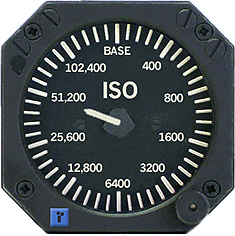
In the summer of 2014, we published our first High ISO Print showdown, and the results proved intriguing while also raising some interesting questions about the nature of ISO in general. Since that time there have certainly been advances made in modern digital cameras along multiple lines where overall image quality is concerned, and we felt that it was "high time" that we revisited the all-important question:
Which popular cameras can print a high-quality 8 x 10 at the highest ISOs?
After all, while most of us post our images online these days, there are still plenty of us who enjoy making prints for family, friends and commercial purposes. And since prints show the strain of ISO noise far more than simply viewing on a screen at similar apparent sizes, we long ago created a "Print Quality" section in our reviews -- which can be found on the "Image Quality" page of the vast majority of cameras we've reviewed (and also on the "Exposure" tab). In these sections are found the largest prints attainable at each available ISO where rich colors and ample fine detail are still present without too much in the way of apparent noise. And since 8 x 10-inch prints are such a popular print size, we're using it as a standard gauge with which to compare cameras for real-world image quality prowess.
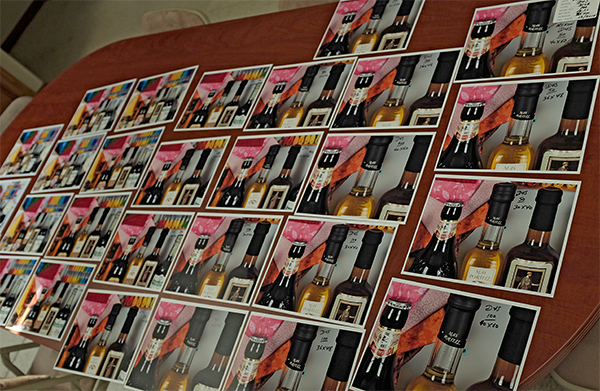
The point of the article is therefore not only to compare current popular cameras but to also provide a quick reference as to which of the most popular cameras can be counted on to deliver the goods in the print quality department at the most commonly used ISOs. And while we'll likely receive the usual amount of complaints regarding the fact that we base our Print Quality analysis on in-camera JPEGs, we stand by the argument that this remains the best way to compare cameras in a standardized fashion. As such, while your mileage may certainly vary in terms of your ability to squeeze larger prints out of an image by editing the RAW file directly, these comparisons still stand as a common benchmark from which to gauge the relative image quality difference across camera models and the sensor sizes housed within.
So, without further ado, below you'll find many cameras in our current Top 30 for overall popularity that currently have Print Quality Analysis performed, listed in the section where you can attain the largest "high-quality" 8 x 10-inch print as mentioned in their respective Image Quality pages. (In a few models where it's not yet been analyzed we've posted the results from a similar camera where the IQ is known to be virtually identical.)
2019 High ISO Print Showdown
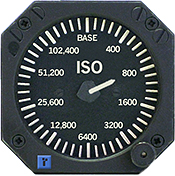
ISO 800 (recreational aviation)
We're certainly not picking on the P1000 here, as it is quite a remarkable camera for what it can achieve. For anyone not yet familiar, this all-in-one superzoom packs a 3000mm eq. optical zoom reach! You simply can't achieve this in an affordable or handholdable size unless you use a super-small sensor, and even then the engineering feat is amazing. But it's our job to report all sides of the review coin, and this is the primary drawback of a smaller-sensored camera, which is to say that the higher ISOs are generally off-limits for good printing.
Superzooms, travel zooms and tough cameras are the most common current offerings using these small (1/2.3 inch) sensors, and once again the point is to keep them small, or small enough. As such, use them in good ambient light scenarios and keep the ISO to roughly 800 or below and you'll be in great shape all around. These sensors are still larger than typical smartphone sensors, which as you'll see down below can't even stand up to ISO 800.
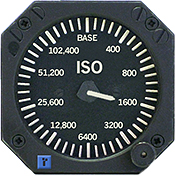
ISO 1600 (private aviation)
Bridge cameras with 1-inch type sensors have been super-popular among IR readers for many years now, and the Panasonic FZ2500 remains one of the most popular of the bunch. As you'll see below at ISO 3200, some 1-inch sensored cameras have been able to pull off a "good" 8 x 10-inch print at that ISO, but 1600 is still fairly good in allowing some gain increase in order to use faster shutter speeds to freeze the action of wildlife and sports with that nice long zoom lens at your disposal.
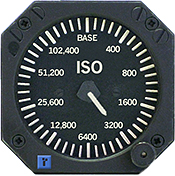
ISO 3200 (general aviation)
Sony RX100 Mark V (and presumably the Mark VI+VII)
A usable 8 x 10-inch print at ISO 3200 is a worthwhile benchmark for cameras moving into more truly useful territory, especially for scenarios where the light is fading and flash is not available or allowed. Here we see examples of both 1-inch and 4/3rds sensors achieving the ISO 3200 benchmark for 8 x 10-inch prints, and this does begin to separate your abilities from common superzooms and especially from your tiny-sensored smartphones.
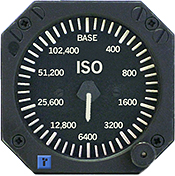
ISO 6400 (cruising altitude)
Ah... now we're getting into really interesting territory! ISO 6400 represents a great deal of shooting freedom in mid-to-low light. Where a shot at ISO 3200 might require a 1/15s exposure, resulting in too much motion blur, ISO 6400 would only need 1/30s in the same situation and likely do the trick (this is just one example to illustrate the point; the same could also be the case in a sports shooting situation where 1/250s is too slow, but 1/500s captures the moment). Here we see a blend of 4/3rds and APS-C sensors, as no 1-inch sensors have yet to crack the ISO 6400 code for a good 8 x 10-inch print. (And once one does it will be quite an interesting feat!) Of course, we also don't see any Full Frame nor Medium Format cameras here, as all modern varieties that we've tested (at least of the currently popular cameras on our site) all produce larger "good" print sizes at ISO 6400.
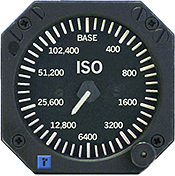
ISO 12,800 (rarefied air)
Canon EOS R / Canon 5D Mark IV
Only our Camera of the Year for 2018 survives here as the lone APS-C model to remain in-stride with the "Big Dogs" at the quite-high ISO 12,800. Indeed, once you get into the 5-digit ISO range, you're really talking about low light shooting potential and "seeing in the dark" to some degree. Want to capture a moose on the edge of a forest at dusk? You might want to ensure that you're equipped with a high gain like these models provide.
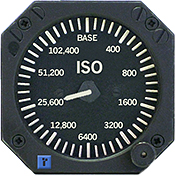
ISO 25,600 (into the stratosphere)
And now to the point many of us have only dreamed of, the ridiculously high ISO setting of 25,600. Sure, some of us have had this setting "available" to us on our cameras, but that really has nothing to do with whether or not it's actually usable in the real world, especially for quality printing results. Well, let us assure you that on these three cameras, this setting will absolutely work in the real world, at least if a nice printed 8 x 10-inch print will meet your needs. (You'll need way less than that amount of resolution for even a large on-screen image.) The Nikon D850 represents our Camera of the Year for 2017, while the Sony A7R III was a worthy runner-up that year. And the Nikon Z7 represents our Best Professional Camera of 2018, and for obviously good reason. Feel free to crank that shutter speed out in the wild in dim shadows with any of these three cameras, and let the ISO fly! (A7R IV not yet analyed.)
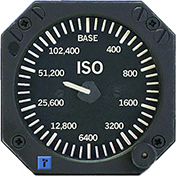
ISO 51,200 (reaching the troposphere)
It had to happen eventually, didn't it? Well, we weren't sure it ever would, but the Medium Format Fuji GFX 50S was the first to ever achieve a good 8 x 10-inch print at ISO 51,200 here at Imaging Resource. We were thrilled by this and of course, spread the word accordingly. We weren't surprised when its rangefinder-styled brother the GFX 50R followed suit some months later, and will certainly be interested to see how the new GFX 100 fares once it makes its way through our lab now that Production-grade samples have become available. But for now, for those of you needing the top-of-the-line in High ISO performance among the ranks of the enthusiast-grade and professional cameras we test on your behalf, these two Fuji brethren are currently the top of the ISO mountain.
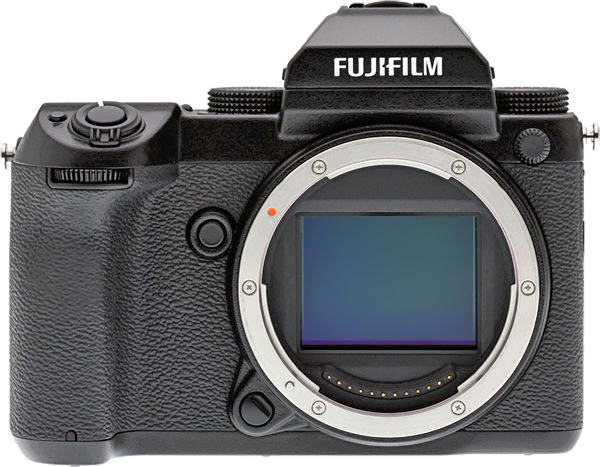
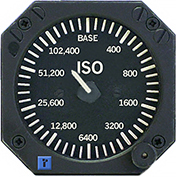
ISO 102,400 (into low earth orbit)
No cameras that we've tested have ever flown this high in achieving a quality 8 x 10-inch print at this gain setting, but we're certain that one someday will. This year marks the 50th anniversary of man landing on the moon, so it's as good a year as any for the record to be broken for a camera! Well, we can certainly dream, and when it happens, it's too bad Walter Cronkite won't be here to tell the world about it.
[Special note that if you don't see a popular camera above, we simply have yet to complete our PQ analysis, and will add it in once complete.]
Big versus small sensors
Once again not to pick on smaller-sensored cameras, as they offer so much that larger-sensored cameras simply can't provide in the superzoom and tough camera worlds as well as the ultra-convenient smartphone world. But just to give you a quick (and dirty) look at what a very small sensor (iPhone 8+) and a very large sensor (Fuji GFX 50S) look like side-by-side at ISO 800, below is a 1:1 crop from our Still Life test images. The difference in apparent size is due to the different resolution, but even then, the degree of difference in image quality for the same exact test shot and setting is staggering.

Want to see the difference in capabilities between a typical smartphone sensor and a high-end professional Medium Format sensor? This is as good an example as any you'll likely see.
You can make comparisons like these in our Comparometer to your heart's content, and might even find a few surprises along the way, so please help yourself to all the image comparisons you want!
Thanks for reading, and if you've had good experience with a camera at higher ISOs for printing purposes and would like to share it with your fellow photographers out there, please weigh in down below in the comments!
• • • • •
Additional Notes
1) Our print quality tests are conducted using straight-from-camera JPEGS at default noise reduction settings, in order to have a common standard on which to base these comparisons. Your standards for what constitutes an acceptable print might be different from ours; we based our evaluations on a fairly stringent standard, that has proven surprisingly consistent between three of us at IRHQ over the last couple of years, despite it being a fundamentally subjective visual criterion. Those of you converting from RAW files may find significantly different results, particularly depending on the noise-reduction and sharpening processing you apply; with no NR, you'll probably find smaller top print sizes, with large amounts of NR, you'll likely find bigger - Although over-aggressive NR processing reduces resolution and smears detail, so in our evaluations, too much is as bad as too little. (Also, the noise reduction capabilities of a program like DxO Optics Pro will go waaay beyond what any camera's internal JPEG processing is capable of.) If you'd like to experiment with your own software and settings, RAW files of our test shots are available for most cameras under each review's "Samples" tab. When there's a RAW version available, you'll find a second link present under the image thumbnail, that will let you download the RAW file.
2) We've only included recently released models here, but you can find a wealth of information and our Print Quality Analysis by clicking on any camera's "Image Quality" tab.











 xxxx
xxxx


